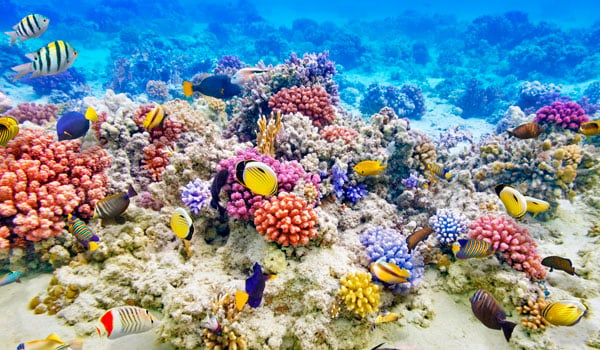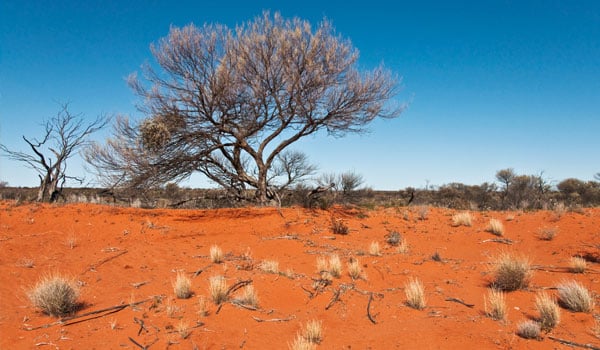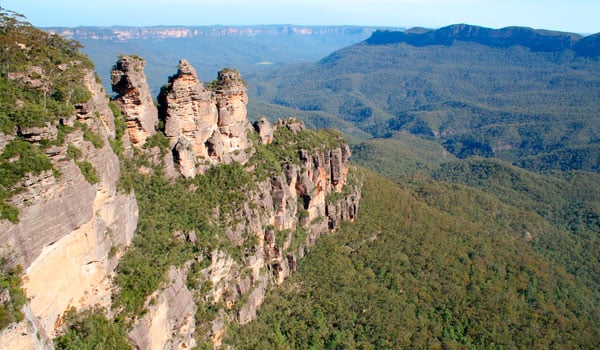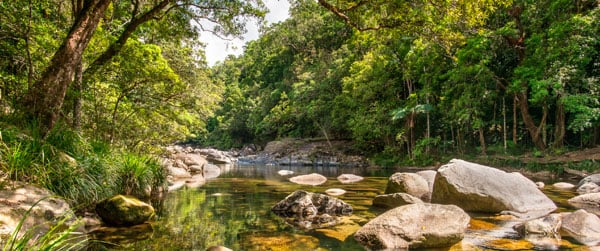Destination Spotlight: Australia, Naturally
The reality of travel in the recent global pandemic has many group travel organizers rethinking their programming options and their mix of destinations. With travel planners questioning where to go next, attention is turning to Australia. As one of the most isolated countries in the world, Australia is high on the list for safe travel, even before coronavirus. There are abundant opportunities for exploring Australia’s natural wonders, making it a go-to destination for future travel plans.
What makes Australia so appealing?
Although it’s the smallest continent, it is the sixth largest country in the world and teeming with unique experiences in every corner. For travel planners, Australia offers a spectrum of thematic possibilities within its natural world, whether your interests include flora and fauna, birding, history, photography, conservation, education, or perhaps your interests encompass all of the above. Australia’s infrastructure is highly developed with high quality educational activities, conservation organizations, lodging, and modern transport systems.
Tailoring Australia to your group or organization
Australia’s breadth and diversity of geography and ecosystems allow easy tailoring and flexibility to fit your group’s interests. Travel planners can choose from a variety of itineraries or include activities around a theme. Your travel partner or tour operator should be well-equipped to guide you in this process. For example, Holbrook has options that range from aboriginal and cultural exploration to species conservation. This latter focus is especially important with the recent fires that devastated wildlife including koalas.
A preview of Australia’s Main Regions
A closer look at Australia’s natural wonders reveals where travelers can experience an off the beaten path adventure.

Queensland and Northern Territory
Situated on the northeast coast of Queensland, Australia, Daintree Rainforest is a triumph of natural wonder for wildlife and birding enthusiasts with its unspoiled, dense rainforest and rich biological diversity. The rainforest contains 30 percent of the frog, reptile, and marsupial species in Australia, 90 percent of Australia’s bat and butterfly species, and seven percent of its bird species. Considering Daintree Rainforest is compacted into 0.2 percent of Australia’s landmass, you are likely to spot a saltwater crocodile or a musky rat kangaroo feeding on the rainforest floor. As a UNESCO World Heritage Site, Daintree is also alive with culture. The area is inhabited by the Kuku Yalanji Aboriginal people. The indigenous tribe has lived in the area for thousands of years, and this unique aspect creates a meaningful experience for travelers.
A short distance south of Daintree, Cairns serves as the gateway to the Great Barrier Reef – one of the Seven Natural Wonders of the world. It is the largest coral reef system comprising over 2,900 separate reefs and home to an extraordinary diversity of marine life including more than 1,500 fish species. The living treasure is a marine science enthusiast’s dream, where field-based discovery and research programs offer a deep, meaningful understanding and appreciation of the reef.

Australia’s Northern Territory occupies the central and northern region of the continent and is home to two striking natural rock formations, Uluru (Ayers Rock) and Kata Tjuta (The Olgas) located in Uluru-Kata Tjuta National Park. Uluru is a sandstone monolith, and Kata Tjuta is a group of domed rock formations, both known as sacred focal points for indigenous Australian culture. Also known as The Red Centre, the outback region is emanating with rich history and is also home to many rare endemic plants, native mammals, and iconic birds – providing excellent opportunities for a range of interests.
New South Wales and Victoria
The southeastern region is home to Blue Mountains National Park, a UNESCO World Heritage Site and certified ecotourism destination. The range of habitats provides a home to a rich variety of fauna including one-third of Australia’s bird species. Among the marsupials, koalas and kangaroos can be spotted. Aboriginal inhabitants include the Gundungurra people in Katoomba and the Durug people in the lower Blue Mountains. The park was one of the areas devastated by bushfires last year, but visiting the park is now encouraged by the New South Wales National Parks and Wildlife Services. There are conservation and research program opportunities, as well as potential community service projects in relation to the areas affected by the bushfires.

Royal Botanical Gardens Victoria is a world-renowned botanic garden extending over Melbourne and Cranbourne. Garden enthusiasts will be inspired by the organization’s mission to connect people to the natural world, providing experiences that enhance the community's understanding and appreciation of plants and horticulture.
South Australia
Kangaroo Island is the third-largest island that lies off the mainland and provides a slower pace for exploration. Nearly half of the island is cloaked with unspoiled vegetation and provides a range of habitats for abundant flora and fauna, many of which are unique to the island. The biodiversity hotspot was another area affected by the bushfires, but much of the east island remains untouched. Over one-third of the island is conserved in national parks, conservation parks, and nature reserves, with wildlife viewing in every direction and opportunities to support the community.
Back on the mainland, Coorong National Park is another area of interest and has been recognized by BirdLife International as an Important Bird Area. With over 200 bird species, the wetland is an extraordinary and important breeding area for the Australian pelican. The long stretch of shallow lagoons bordered with sandy dunes is also a refuge for ducks, swans, cormorants, terns, grebes, and over 200 migratory birds.
Interests for all
Australia’s diverse regions provide many paths for exploring the natural world. The English-speaking island nation offers a familiar comfort for travelers with knowledgeable and caring guides, and its isolation as a country provides a unique safety. There are paths for all explorers, from those wanting to dive into the natural history and cultural heritage, to photographers and birders striving to capture the essence of the wild. For more information on Australia and to preview Holbrook Travel programs visit Holbrook Australia.


